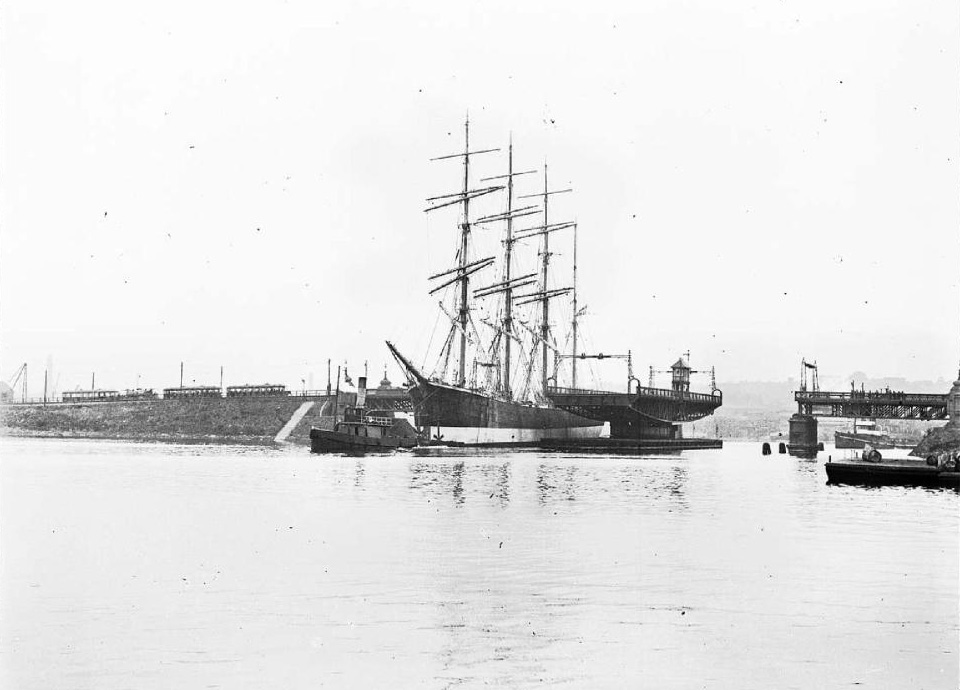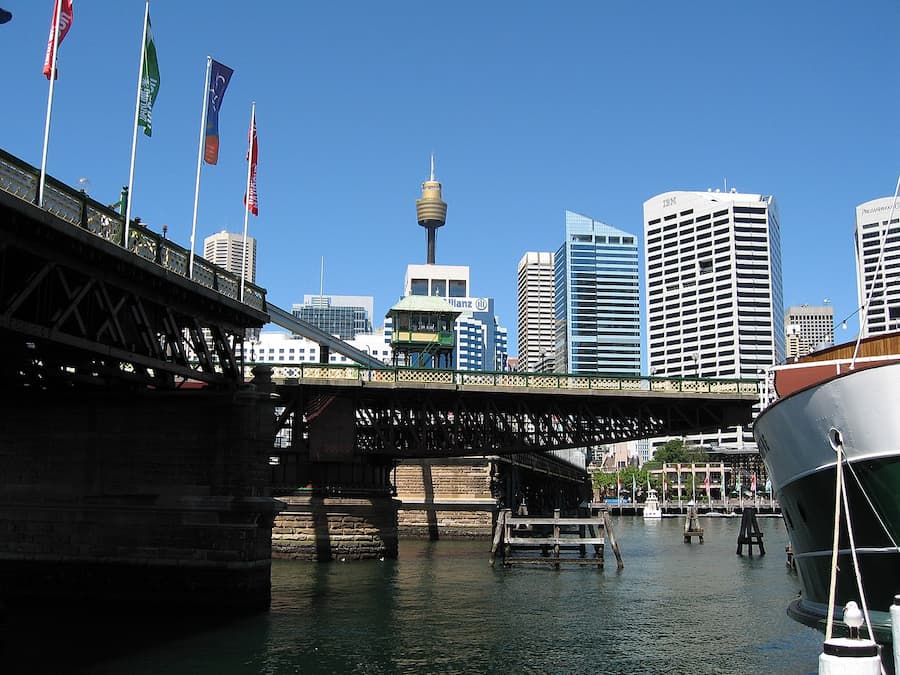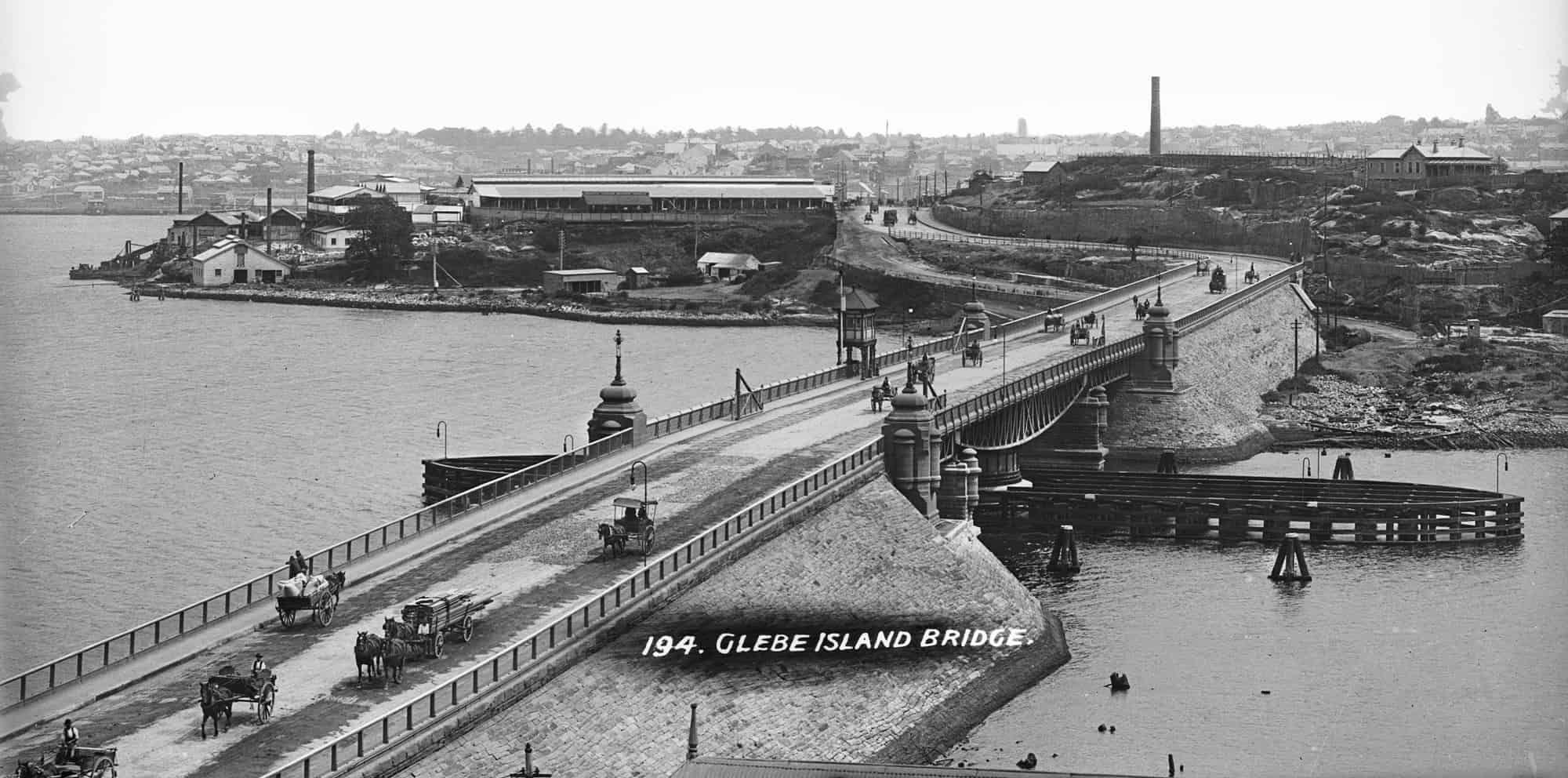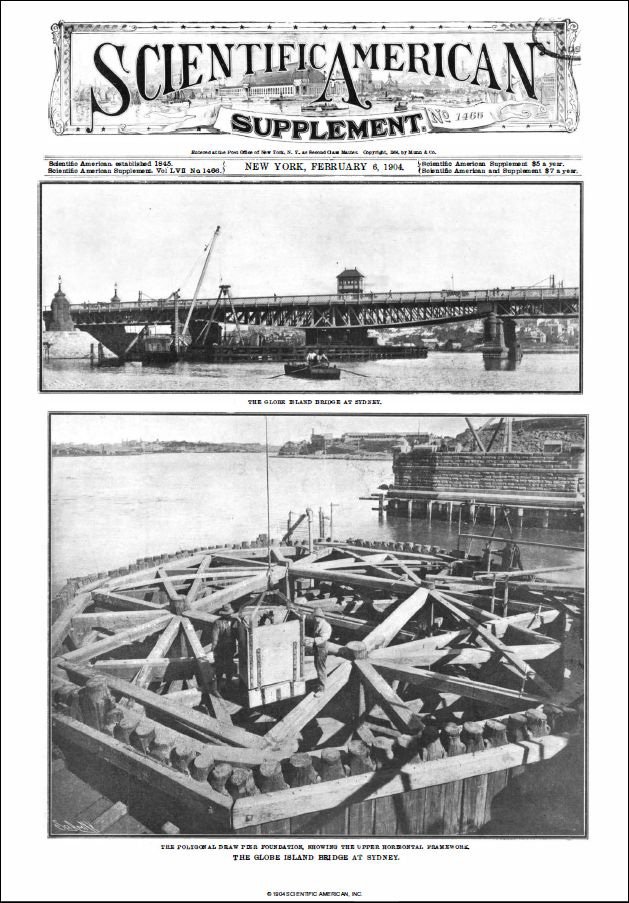| 1862 | 1903 | 1933 | 1995 | 2013 | 2017 | ???? |
|---|---|---|---|---|---|---|
| First Glebe Island Bridge built – private toll bridge (also known as Blackbutts Bridge) | Second Glebe Island Bridge built with an electrically operated swing span | Bridge undergoes major upgrade with underpinning to replace decayed piles | Following the opening of the ANZAC Bridge, Glebe Island Bridge closed to vehicular traffic | Glebe Island Bridge placed on the State Heritage Register | RMS carries out detailed inspection to help determine future maintenance & improve structure | Glebe Island Bridge opens to pedestrian and cycle traffic |
A brief history
Early Sydney planners realised that a bridge across Johnstons Bay, connecting Pyrmont to Glebe Island and Rozelle, could provide a short cut to the developing northern and western areas of Sydney.
The first Glebe Island Bridge, also known as Blackbutts Bridge, was built of timber. It was in poor repair by 1901. The government replaced it with a steel bridge (opened 1903) designed by Percy Allan. The bridge has two fixed truss spans and an swing span. The Glebe Island Bridge and its nearby sibling, the Pyrmont Bridge (opened 1902), are significant and rare examples of electrically operated steel swing bridges and are the two oldest bridges on Sydney Harbour.
The prestigious journal “The Scientific American” included a special supplement about the construction of the bridge in its February 6, 1904 issue.
The accompanying article by John Plummer detailed the construction of the Globe (sic) Island Bridge and notes that the “…fine Pyrmont Bridge … has been joined by the opening of a second, of equal importance …”

(Public domain photo from the Collection of the Australian National Maritime Museum)
More information
The Dictionary of Sydney
J Lawrence and C Warne, Balmain to Glebe: A Pictorial History, Kingsclear Books (2009)
Roads & Maritime History & Conservation Register
Demolition threats? Can a Phoenix rise – yet again?
A common Sydney story is the threat of demolition of a structure or building by a developer or the government, followed by a push back by the community who value it and can see its potential. Such community pressure has seen the restoration of structures which are now regarded as significant State assets. For example, the monumental QVB (1898) was once threatened with demolition for a car park and there were orders for the demolition of Pyrmont Bridge as it was argued that it interfered with early plans for the revamp of Darling Harbour. The Pyrmont Bridge, saved and restored, now carries over 5 million pedestrians per annum.
Many believe the Glebe Island Bridge, when restored, should serve a valuable role as a pedestrian and cycle conduit and help relieve Sydney’s chronic traffic congestion, whilst preserving orderly maritime access to the bays precinct.
“In the years to come, this bridge will be restored, re-commissioned and become a vital transport link for pedestrians, bicyclists and a likely light rail system. It will be valued by the people of New South Wales as highly as its nearby cousin, the Pyrmont Bridge …”
President, National Trust (NSW), 20 Nov 2013

Glebe Island Bridge: Heritage listings
- Register of the National Estate
- National Trust Register
- RMS Heritage & Conservation s170 Register
- Local Environment Plan
- NSW State Heritage Register
The NSW State Heritage Register provides the highest level of protection available to those heritage items placed on it. The Glebe Society urges the Government to quickly formulate and implement its Heritage Conservation Plan, as required under the Heritage Act, to enable the preservation and ongoing sympathetic management of the Glebe Island Bridge as a pedestrian and cycle conduit.
“The Glebe Island Bridge (1903) is the second-oldest bridge on the harbour … It is muscular, beautiful and listed on five heritage registers, including the Register of the National Estate and the Roads and Maritime Services section 170 register…”
Elizabeth Farrelly, SMH, 10 Oct 2013
More information
Roads & Maritime History & Conservation Register
NSW Environment & Heritage State Heritage Register
City of Sydney Local Environment Plan 2012


